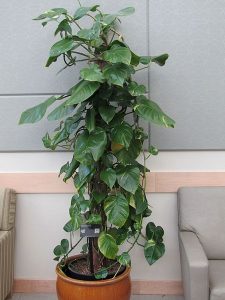Certain indoor plants can dramatically remove indoor air pollutants.
.
We’ve been spending an awful lot of time indoors – which can also pose its health risks:
How staying indoors affects your immune system – BBC Future
.
We need to do something about it:
Better indoor air quality decreases the risk of coronavirus
.
Here’s the conclusion of a piece from Arch Daily:
As the last couple of months have shown Humans can face new unseen health risks. Spending time indoors has therefore been considered as a solution. Nevertheless if unmaintained, unchecked, and improperly designed, our homes can harbor many air pollutants, causing mild and serious discomforts alike. A few smart choices would therefore go a long way, consciously managing the environmental quality of the spaces and increasing our general well-being.
How to Transform a Polluted Indoor Environment into a Healthy Home | ArchDaily
.
 And one thing we can do which does not involve a whole redesign of our homes is to get in a few plants – but we need to chose the right ones:
And one thing we can do which does not involve a whole redesign of our homes is to get in a few plants – but we need to chose the right ones:
NASA and other organizations have conducted studies that show the rise of many indoor volatile organic compounds promote asthma, nausea, cancer, and various respiratory illnesses. Equally important in these studies is the finding that certain indoor plants can dramatically remove indoor air pollutants. Some of these plants that NASA recommends include areca palm or butterfly palm, snake plant, and money plant or devil’s ivy (see illustration). As we are in temporary isolation in our homes or apartments, why not bring some of these plants into your living spaces?
What We Can Do to Preserve Our Cleaner Air – Coronavirus Coverage
.
Although it’s certainly not a panacea:
Which houseplants should you buy to purify air? None of them. | nationalgeographic.com
.